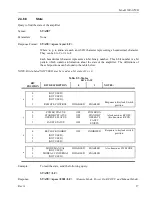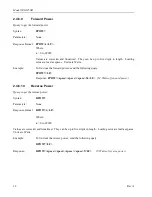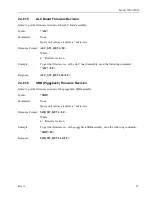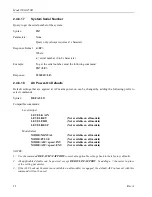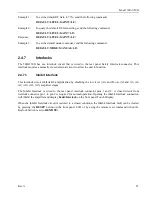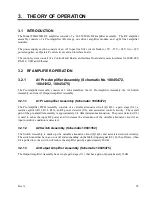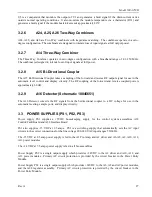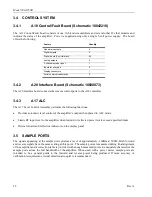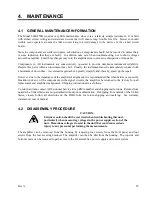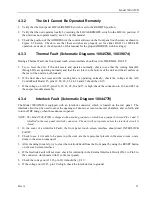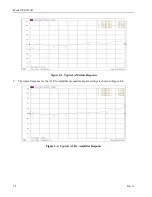
Model 500A250D
30
Rev A
4.3 TROUBLESHOOTING
CAUTION:
The transistors used in the Model 500A250D amplifier are LDMOS
transistors. These devices are very reliable when installed in a suitable
circuit, but they can be easily damaged by improper troubleshooting or
handling techniques.
Use caution when troubleshooting the LDMOS; do not short the gate to
the ground or to the drain.
CAUTION:
Use care when unpacking new LDMOS. The LDMOS packaging should
only be opened at Electrostatic Discharge (ESD)-approved workstations,
by individuals who are familiar with the handling of LDMOS and other
ESD-sensitive devices.
Troubleshooting the Model 500A250D in a logical manner can speed the solution to a problem. The settings
of potentiometers (pots), capacitors (caps), or other variables should not be disturbed until other problems
have been eliminated. Comparing the measured DC voltages to those shown on the schematics can solve
many problems. Before measuring circuit voltages, first verify that the voltages to the circuits are correct.
Model 500A250D troubleshooting symptoms and remedies are described in the sections that follow
4.3.1—General-Reading Faults
4.3.2—The Unit Cannot be Operated Remotely
4.3.3—Thermal Fault
4.3.4—Interlock Fault
4.3.5—Amplifier Faults
4.3.6—Low or No Power Output (DC Tests)
4.3.7—Low or No Power Output (RF Test)
4.3.1
General - Reading Faults
The Model 500A250D incorporates relatively simple fault detection circuitry, which makes use of the digital
display panel to alert the user or technician which component(s) need service. Use of these indications can
usually expedite troubleshooting of the amplifier. Most faults can be immediately determined down to the
assembly level. If a reset is still indicated, turn off the RF power signal to the input of the amplifier, read and
record the fault indication displayed on the digital control panel for later reference. Then, use the RESET
function to see if the fault clears. If the fault clears, slowly bring the amplifier’s drive level back up and
ensure that recommended RF power levels are not exceeded. If the fault indication is no longer visible, the
fault may have been brought about by a temporary transient condition, component thermal condition or
excessive RF drive to the amplifier’s input. If the fault does not clear with the RF drive off, some other
problem exists in the amplifier.
Summary of Contents for 500A250D
Page 2: ......
Page 4: ......
Page 6: ......
Page 18: ......
Page 22: ...Model 500A250D 4 Rev A ...
Page 25: ...Page 3 500A250D 500 watts CW 10kHz 250MHz Graphs ...
Page 26: ...Page 4 500A250D 500 watts CW 10kHz 250MHz Graphs ...
Page 28: ......
Page 46: ...Model 500A250D 24 Rev A ...
Page 58: ......


